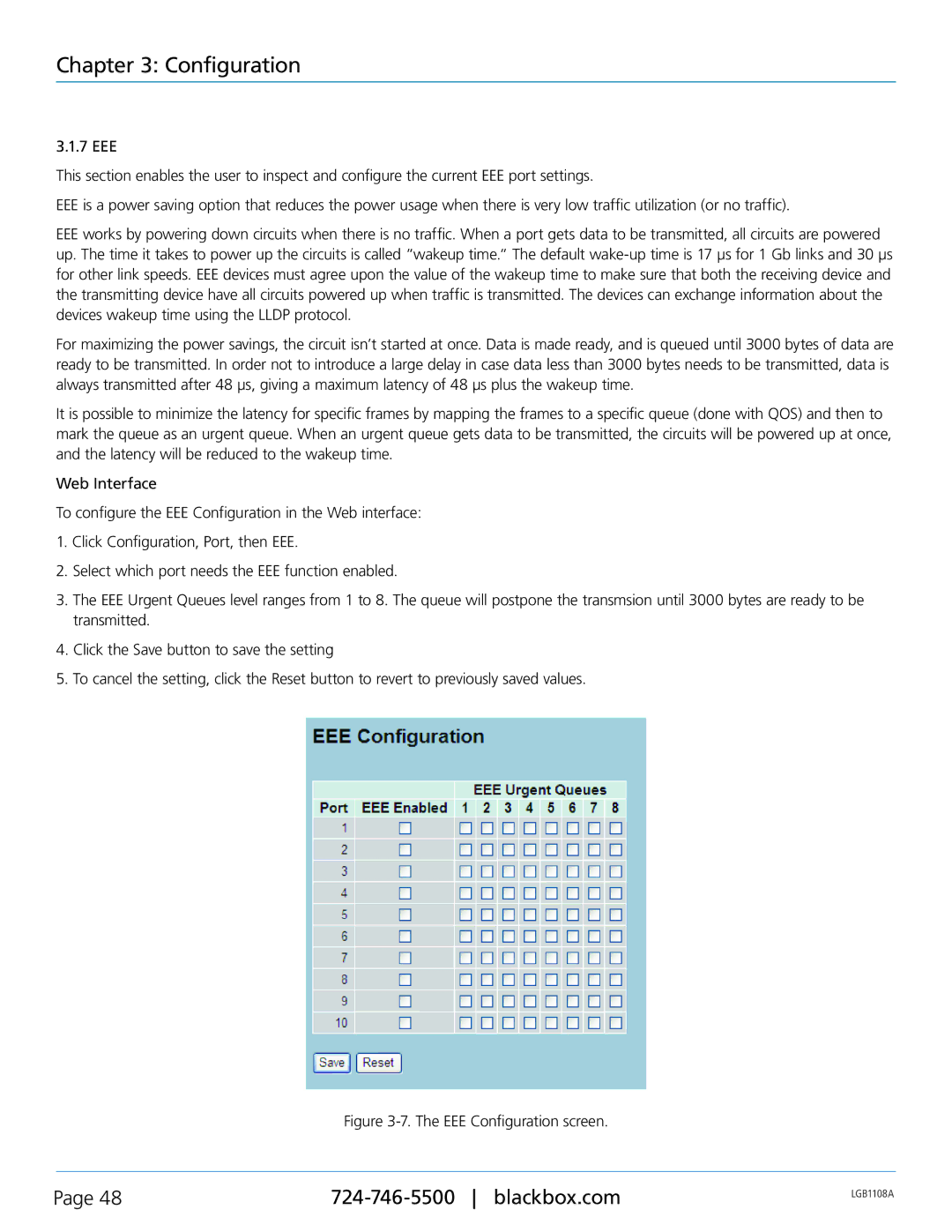
Chapter 3: Configuration
3.1.7 EEE
This section enables the user to inspect and configure the current EEE port settings.
EEE is a power saving option that reduces the power usage when there is very low traffic utilization (or no traffic).
EEEworks by powering down circuits when there is no traffic. When a port gets data to be transmitted, all circuits are powered up. The time it takes to power up the circuits is called “wakeup time.“ The default
For maximizing the power savings, the circuit isn’t started at once. Data is made ready, and is queued until 3000 bytes of data are ready to be transmitted. In order not to introduce a large delay in case data less than 3000 bytes needs to be transmitted, data is always transmitted after 48 µs, giving a maximum latency of 48 µs plus the wakeup time.
It is possible to minimize the latency for specific frames by mapping the frames to a specific queue (done with QOS) and then to mark the queue as an urgent queue. When an urgent queue gets data to be transmitted, the circuits will be powered up at once, and the latency will be reduced to the wakeup time.
Web Interface
To configure the EEE Configuration in the Web interface:
1.Click Configuration, Port, then EEE.
2.Select which port needs the EEE function enabled.
3.The EEE Urgent Queues level ranges from 1 to 8. The queue will postpone the transmsion until 3000 bytes are ready to be transmitted.
4.Click the Save button to save the setting
5.To cancel the setting, click the Reset button to revert to previously saved values.
Figure 3-7. The EEE Configuration screen.
Page 48 | LGB1108A | |
|
|
